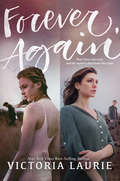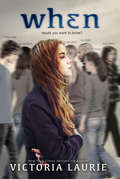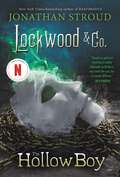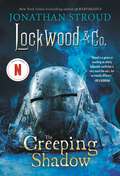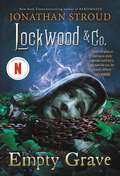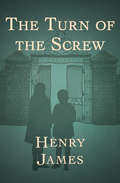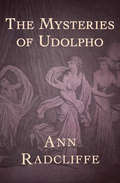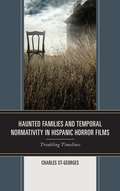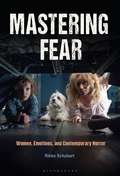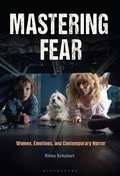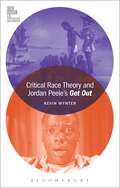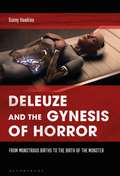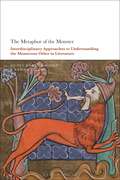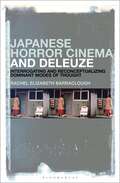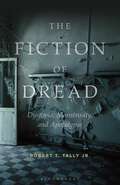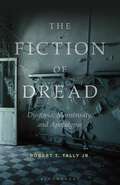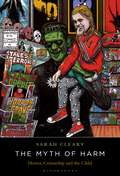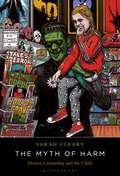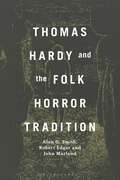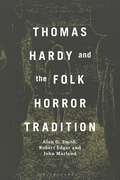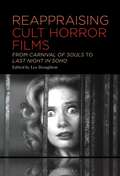- Table View
- List View
Forever, Again
by Victoria LaurieLily Bennett is less than thrilled to be the new kid as she starts her junior year in high school. But soon after classes begin, she meets a classmate, Cole Drepeau, with whom she forms an immediate and intimate bond. As Cole and Lily grow closer, Lily learns about the murder that divided the town more than thirty years before. In 1987, graduating senior Amber Greeley snapped, killing her boyfriend Ben-Cole's uncle-and taking her own life. Lily feels inexplicably linked to Amber, and she can't help but think that there's more to the girl's story. Determined to investigate the truth about Cole's uncle's death, Lily and Cole are pulled into a dark mystery-one that shakes the constraints of the world they've always believed in. Masterfully told by best-selling author Victoria Laurie, this novel alternates voices between Lily and Amber, a generation apart, as decades of dark family secrets and treacherous betrayals are woven into the most epic of love stories. Praise for When"Laurie's debut for teens is quite an accomplishment...The character development is just as riveting as the plot in this well-constructed thriller." -Kirkus Reviews"This excellent book is a must-have for all libraries, especially where suspense and teen-life fiction is hot. This novel will provide crossover appeal to both older teens and adults." -VOYA"[T]he novel packs in plenty of fast-paced, nail-biting fun, perfect for fans of Barnes' The Naturals series." -Bulletin of the Center for Children's Books"The plot is filled with false turns, which will keep readers engaged until the surprising ending." -School Library Journal
When
by Victoria LaurieMaddie Fynn is a shy high school junior, cursed with an eerie intuitive ability: she sees a series of unique digits hovering above the foreheads of each person she encounters. Her earliest memories are marked by these numbers, but it takes her father's premature death for Maddie and her family to realize that these mysterious digits are actually deathdates, and just like birthdays, everyone has one.Forced by her alcoholic mother to use her ability to make extra money, Maddie identifies the quickly approaching deathdate of one client's young son, but because her ability only allows her to see the when and not the how, she's unable to offer any more insight. When the boy goes missing on that exact date, law enforcement turns to Maddie.Soon, Maddie is entangled in a homicide investigation, and more young people disappear and are later found murdered. A suspect for the investigation, a target for the murderer, and attracting the attentions of a mysterious young admirer who may be connected to it all, Maddie's whole existence is about to be turned upside down. Can she right things before it's too late?
The Hollow Boy (Lockwood & Co. #3)
by Jonathan StroudAs a massive outbreak of supernatural Visitors baffles Scotland Yard and causes protests throughout London, Lockwood & Co. continue to demonstrate their effectiveness in exterminating spirits. Anthony Lockwood is dashing, George insightful, and Lucy dynamic, while the skull in the jar utters sardonic advice from the sidelines. There is a new spirit of openness in the team now that Lockwood has shared some of his childhood secrets, and Lucy is feeling more and more as if her true home is at Portland Row. It comes as a great shock, then, when Lockwood and George introduce her to an annoyingly perky and hyper-efficient new assistant, Holly Munro.Meanwhile, there are reports of many new hauntings, including a house where bloody footprints are appearing, and a department store full of strange sounds and shadowy figures. But ghosts seem to be the least of Lockwood & Co.'s concerns when assassins attack during a carnival in the center of the city. Can the team get past their personal issues to save the day on all fronts, or will bad feelings attract yet more trouble?Danger abounds, tensions escalate, and new loyalties form in this third delightfully terrifying adventure in the critically acclaimed Lockwood & Co. series. Praise for The Screaming Staircase"This story will keep you reading late into the night, but you'll want to leave the lights on. Stroud is a genius at inventing an utterly believable world which is very much like ours, but so creepily different. Put The Screaming Staircase on your 'need to read' list!" -Rick Riordan "A pleasure from tip to tail, this is the book you hand the advanced readers that claim they'd rather read Paradise Lost than Harry Potter. Smart as a whip, funny, witty, and honestly frightening at times, Stroud lets loose and gives readers exactly what they want. Ghosts, kids on their own without adult supervision, and loads of delicious cookies." -Elizabeth Bird, School Library Journal "Stroud shows his customary flair for blending deadpan humor with thrilling action, and the fiery interplay among the three agents of Lockwood & Co. invigorates the story (along with no shortage of creepy moments)." -Publishers Weekly Praise for The Whispering Skull *"An occult portal and its spectral guardian nearly cut short the careers of three rising young ghost hunters in this madcap sequel to The Screaming Staircase (2013). For all their internecine squabbling, the three protagonists make a redoubtable team-and their supporting cast, led by the sneering titular skull in a jar, adds color and complications aplenty. Rousing adventures for young tomb robbers and delves into realms better left to the dead." -Kirkus Reviews (starred review) *"Stroud writes with a fine ear for dialog, a wry sense of humor, and a knack for describing haunted places. Creating tension that ebbs and flows, he slowly builds the dramatic narrative to a resounding crescendo, and he makes the quieter scenes that follow just as compelling." -Booklist (starred review)
The Creeping Shadow (Lockwood & Co. #4)
by Jonathan StroudAfter leaving Lockwood & Co. at the end of The Hollow Boy, Lucy is a freelance operative, hiring herself out to agencies that value her ever-improving skills. One day she is pleasantly surprised by a visit from Lockwood, who tells her he needs a good Listener for a tough assignment. Penelope Fittes, the leader of the giant Fittes Agency wants them--and only them--to locate and remove the Source for the legendary Brixton Cannibal. They succeed in their very dangerous task, but tensions remain high between Lucy and the other agents. Even the skull in the jar talks to her like a jilted lover. What will it take to reunite the team? Black marketeers, an informant ghost, a Spirit Cape that transports the wearer, and mysteries involving Steve Rotwell and Penelope Fittes just may do the trick. But, in a shocking cliffhanger ending, the team learns that someone has been manipulating them all along. . . .
The Empty Grave (Lockwood & Co. #5)
by Jonathan StroudFive months after the events in THE CREEPING SHADOW, we join Lockwood, Lucy, George, Holly, and their associate Quill Kipps on a perilous night mission: they have broken into the booby-trapped Fittes Mausoleum, where the body of the legendary psychic heroine Marissa Fittes lies. Or does it? This is just one of the many questions to be answered in Book 5 of the Lockwood & Co. series. Will Lockwood ever reveal more about his family's past to Lucy? Will their trip to the Other Side leave Lucy and Lockwood forever changed? Will Penelope Fittes succeed in shutting down their agency forever? The young agents must survive attacks from foes both spectral and human before they can take on their greatest enemy in a climactic and chaotic battle. And to prevail they will have to rely on help from some surprising--and shadowy--allies. Jonathan Stroud once again delivers a rousing adventure full of danger, laughs, twists, and frights. The revelations will send readers back to Book 1 to start the series all over again. Exclusive to this paperback edition: a Lockwood & Co. short story, "The Dagger in the Desk," and an illustrated ghost guide.
The Turn of the Screw
by Henry JamesOne of the most disturbing ghost stories ever written, a tale of imagined danger and real dreadA young governess arrives at a secluded country estate, hired by the manor’s often-absent master to look after his orphaned niece and nephew. The young woman, a parson’s daughter, is immediately charmed by eight-year-old Flora—and Miles, two years older, seems like a perfect little gentleman when he is unexpectedly sent home from his boarding school. But Miles’s steadfast refusal to reveal the cause of his expulsion is troubling, as are the staff’s whispered stories about the previous governess, Miss Jessel, and her lover, the mysterious valet, Peter Quint, both of whom are now dead. Most disturbing of all are the spectral figures wandering the grounds of Bly that only the new governess can see: a woman and a dark man who seem to take a special interest in Miles and Flora. No longer sure of what is real and whom she can trust, the governess desperately tries to hold on to her sanity and protect the innocent children from forces too sinister to name. A literary masterpiece whose mysteries are open to endless interpretation, The Turn of the Screw has been haunting readers for more than a century. This ebook has been professionally proofread to ensure accuracy and readability on all devices.
The Mysteries of Udolpho: A Romance
by Ann RadcliffeThe haunting, atmospheric tale that set the standard for the Gothic novel Emily St. Aubert leads a simple and contented life. A lover of nature, she finds the like-minded man of her dreams, the handsome Valancourt, on a journey across the Pyrenees. Her peace and happiness, however, come to a swift end when her father succumbs to an illness and she is sent to live with her aunt. Madame Cheron does not share her niece’s interest in the natural world and shows little concern for the girl’s feelings. When her aunt marries a haughty Italian nobleman, Montoni, Emily has no choice but to accompany the couple to the gloomy and remote Castle Udolpho. Unsure if she will ever see her beloved Valancourt again, she is alone, trapped, and frightened. Her nightmare is about to begin. This ebook has been professionally proofread to ensure accuracy and readability on all devices.
Haunted Families And Temporal Normativity In Hispanic Horror Films: Troubling Timelines (PDF)
by Charles St-GeorgesThis book examines the interactions between ghosts and families in three recent horror films from the Spanish-speaking world that, rather than explicitly referencing recent political violence, speak to the societal conditions and everyday normative violence that serve as preconditions for political violence. This study deconstructs intersectional processes of racially and sexually normative subject formation-and its oppositional other, ghostly erasure-that are framed by a common temporal logic, wherein full citizenship is contingent upon a nation's dominant notions of contemporaneousness and whether individuals properly inhabit prescriptive timelines of (re)productivity. St-Georges's study explores ways in which ghosts and families are manipulated in each national imaginary as a strategy for negotiating volatility within symbolic order: a tactic that can either naturalize or challenge normative discourses. As a literary and cinematic trope, ghosts are particularly useful vehicles for the exploration of national imaginaries and the dominant or competing cultural attitudes towards a country's history, and thus, the articulation of a present political reality. The rhetorical figure of the family is also key in this process as a mechanism for expressing national allegories, for expressing generational anxieties about a nation's relationship to time, and for organizing societies and social subjects as such, interpellating them into or excluding them from national imaginaries. By proposing these specific coordinates-ghosts and families-and by mapping their relationship between Spain and Latin America, Troubling Timelines proposes a study of a temporal framework that, besides bridging the traditional area-studies divide across the Atlantic, creates a space for interdisciplinary inquiry while also responding to increasing demand for studies that focus on intersectionality.
Mastering Fear: Women, Emotions, and Contemporary Horror
by Rikke SchubartMastering Fear analyzes horror as play and examines what functions horror has and why it is adaptive and beneficial for audiences. It takes a biocultural approach, and focusing on emotions, gender, and play, it argues we play with fiction horror. In horror we engage not only with the negative emotions of fear and disgust, but with a wide range of emotions, both positive and negative. The book lays out a new theory of horror and analyzes female protagonists in contemporary horror from child to teen, adult, middle age, and old age.Since the turn of the millennium, we have seen a new generation of female protagonists in horror. There are feisty teens in The Vampire Diaries (2009–2017), troubled mothers in The Babadook (2014), and struggling women in the New French extremity with Martyrs (2008) and Inside (2007). At the fuzzy edges of the genre are dramas like Pan's Labyrinth (2006) and Black Swan (2010), and middle-age women are now protagonists with Carol in The Walking Dead (2010–) and Jessica Lange's characters in American Horror Story (2011–). Horror is not just for men, but also for women, and not just for the young, but for audiences of all ages.
Mastering Fear: Women, Emotions, and Contemporary Horror
by Rikke SchubartMastering Fear analyzes horror as play and examines what functions horror has and why it is adaptive and beneficial for audiences. It takes a biocultural approach, and focusing on emotions, gender, and play, it argues we play with fiction horror. In horror we engage not only with the negative emotions of fear and disgust, but with a wide range of emotions, both positive and negative. The book lays out a new theory of horror and analyzes female protagonists in contemporary horror from child to teen, adult, middle age, and old age.Since the turn of the millennium, we have seen a new generation of female protagonists in horror. There are feisty teens in The Vampire Diaries (2009–2017), troubled mothers in The Babadook (2014), and struggling women in the New French extremity with Martyrs (2008) and Inside (2007). At the fuzzy edges of the genre are dramas like Pan's Labyrinth (2006) and Black Swan (2010), and middle-age women are now protagonists with Carol in The Walking Dead (2010–) and Jessica Lange's characters in American Horror Story (2011–). Horror is not just for men, but also for women, and not just for the young, but for audiences of all ages.
Critical Race Theory and Jordan Peele's Get Out (Film Theory in Practice)
by Kevin WynterThis book provides a concise introduction to critical race theory and shows how this theory can be used to interpret Jordan Peele's Get Out. It surveys recent developments in critical race studies and introduces key concepts that have helped shape the field such as Black masculinity, white privilege, the Black body, and miscegenation. The book's analysis of Get Out situates it within the context of the American horror film, illustrating how contemporary debates in critical race theory and approaches to the analysis of mainstream Hollywood cinema can illuminate each other. In this way, the book provides both an accessible reference guide to key terminology in critical race studies and film studies, while contributing new scholarship to both fields.
Critical Race Theory and Jordan Peele's Get Out (Film Theory in Practice)
by Kevin WynterThis book provides a concise introduction to critical race theory and shows how this theory can be used to interpret Jordan Peele's Get Out. It surveys recent developments in critical race studies and introduces key concepts that have helped shape the field such as Black masculinity, white privilege, the Black body, and miscegenation. The book's analysis of Get Out situates it within the context of the American horror film, illustrating how contemporary debates in critical race theory and approaches to the analysis of mainstream Hollywood cinema can illuminate each other. In this way, the book provides both an accessible reference guide to key terminology in critical race studies and film studies, while contributing new scholarship to both fields.
Deleuze and the Gynesis of Horror: From Monstrous Births to the Birth of the Monster
by Sunny HawkinsApplying Deleuze's schizoanalytic techniques to film theory, Deleuze and the Gynesis of Horror demonstrates how an embodied approach to horror film analysis can help us understand how film affects its viewers and distinguish those films which reify static, hegemonic, “molar” beings from those which prompt fluid, nonbinary, “molecular” becomings. It does so by analyzing the politics of reproduction in contemporary films such as Ex Machina; Mary Shelley's Frankenstein; Mad Max: Fury Road; the Twilight saga; and the original Alien quadrilogy and its more recent prequels, Prometheus and Alien: Covenant. Author Sunny Hawkins argues that films which promote a “monstrous philosophy” of qualitative, affirmative difference as difference-in-itself, and which tend to be more molecular than molar in their expressions, can help us trace a “line of flight” from the gender binary in the real world. Deleuze and the Gynesis of Horror demonstrates how the techniques of horror film – editing, sound and visual effects, lighting and colour, camera movement – work in tandem with a film's content to affect the viewer's body in ways that disrupt the sense of self as a whole, unified subject with a stable, monolithic identity and, in some cases, can serve to breakdown the binary between self/Other, as we come to realize that we are none of us static, categorizable beings but are, as Henri Bergson said, “living things constantly becoming.”
Deleuze and the Gynesis of Horror: From Monstrous Births to the Birth of the Monster
by Sunny HawkinsApplying Deleuze's schizoanalytic techniques to film theory, Deleuze and the Gynesis of Horror demonstrates how an embodied approach to horror film analysis can help us understand how film affects its viewers and distinguish those films which reify static, hegemonic, “molar” beings from those which prompt fluid, nonbinary, “molecular” becomings. It does so by analyzing the politics of reproduction in contemporary films such as Ex Machina; Mary Shelley's Frankenstein; Mad Max: Fury Road; the Twilight saga; and the original Alien quadrilogy and its more recent prequels, Prometheus and Alien: Covenant. Author Sunny Hawkins argues that films which promote a “monstrous philosophy” of qualitative, affirmative difference as difference-in-itself, and which tend to be more molecular than molar in their expressions, can help us trace a “line of flight” from the gender binary in the real world. Deleuze and the Gynesis of Horror demonstrates how the techniques of horror film – editing, sound and visual effects, lighting and colour, camera movement – work in tandem with a film's content to affect the viewer's body in ways that disrupt the sense of self as a whole, unified subject with a stable, monolithic identity and, in some cases, can serve to breakdown the binary between self/Other, as we come to realize that we are none of us static, categorizable beings but are, as Henri Bergson said, “living things constantly becoming.”
The Metaphor of the Monster: Interdisciplinary Approaches to Understanding the Monstrous Other in Literature
by Keith Moser and Karina ZelayaThe Metaphor of the Monster offers fresh perspectives and a variety of disciplinary approaches to the ever-broadening field of monster studies. The eclectic group of contributors to this volume represents areas of study not generally considered under the purview of monster studies, including world literature, classical studies, philosophy, ecocriticism, animal ethics, and gender studies. Combining historical overviews with contemporary and global outlooks, this volume recontextualizes the monstrous entities that have always haunted the human imagination in the age of the Anthropocene. It also invites reflection on new forms of monstrosity in an era epitomized by an unprecedented deluge of (mis)information. Uniting researchers from varied academic backgrounds in a common effort to challenge the monstrous labels that have historically been imposed upon "the Other," this book endeavors above all to bring the monster out of the shadows and into the light of moral consideration.
The Metaphor of the Monster: Interdisciplinary Approaches to Understanding the Monstrous Other in Literature
The Metaphor of the Monster offers fresh perspectives and a variety of disciplinary approaches to the ever-broadening field of monster studies. The eclectic group of contributors to this volume represents areas of study not generally considered under the purview of monster studies, including world literature, classical studies, philosophy, ecocriticism, animal ethics, and gender studies. Combining historical overviews with contemporary and global outlooks, this volume recontextualizes the monstrous entities that have always haunted the human imagination in the age of the Anthropocene. It also invites reflection on new forms of monstrosity in an era epitomized by an unprecedented deluge of (mis)information. Uniting researchers from varied academic backgrounds in a common effort to challenge the monstrous labels that have historically been imposed upon "the Other," this book endeavors above all to bring the monster out of the shadows and into the light of moral consideration.
Japanese Horror Cinema and Deleuze: Interrogating and Reconceptualizing Dominant Modes of Thought
by Rachel Elizabeth BarracloughUsing theories of national, transnational and world cinema, and genre theories and psychoanlaysis as the basis of its argument, Japanese Horror Cinema and Deleuze argues that these understandings of Japanese horror films can be extended in new ways through the philosophy of Deleuze. In particular, the complexities and nuances of how films like Ju-On: The Grudge (2002), Audition (1999) and Kairo (2001) (and beyond) form dynamic, transformative global networks between industries, directors and audiences can be considered. Furthermore, understandings of how key horror tropes and motifs apply to these films (and others more broadly), such as the idea of the “monstrous-feminine”, can be transformed, allowing these models to become more flexible.
Japanese Horror Cinema and Deleuze: Interrogating and Reconceptualizing Dominant Modes of Thought
by Rachel Elizabeth BarracloughUsing theories of national, transnational and world cinema, and genre theories and psychoanlaysis as the basis of its argument, Japanese Horror Cinema and Deleuze argues that these understandings of Japanese horror films can be extended in new ways through the philosophy of Deleuze. In particular, the complexities and nuances of how films like Ju-On: The Grudge (2002), Audition (1999) and Kairo (2001) (and beyond) form dynamic, transformative global networks between industries, directors and audiences can be considered. Furthermore, understandings of how key horror tropes and motifs apply to these films (and others more broadly), such as the idea of the “monstrous-feminine”, can be transformed, allowing these models to become more flexible.
The Fiction of Dread: Dystopia, Monstrosity, and Apocalypse
by Dr Robert T. Tally Jr.A history and examination of dystopia and angst in popular culture that speaks to our current climate of dread.At the dawn of the 20th century, a wide-ranging utopianism dominated popular and intellectual cultures throughout Europe and America. However, in the aftermathof the World Wars, with such canonical examples as Brave New World and Nineteen-Eighty-Four, dystopia emerged as a dominant genre, in literature and in social thought. The continuing presence and eventual dominance of dystopian themes in popular culture-e.g., dismal authoritarian future states, sinister global conspiracies, post-apocalyptic landscapes, a proliferation of horrific monsters, and end-of-the-world fantasies-have confirmed the degree to which the 21st is also a dystopian century.Drawing on literature as varied as H.G. Wells's The Time Machine, Neil Gaiman's American Gods, and Suzanne Collins's The Hunger Games, and on TV and film such as The Walking Dead, Black Mirror, and The Last of Us, Robert T. Tally Jr. explores the landscape of angst created by the monstrous accumulation of dystopian material. The Fiction of Dread provides an innovative reading of contemporary culture and offers an alternative vision for critical theory and practice at a moment when, as has been famously observed, it is easier to imagine the end of the world than the end of capitalism.
The Fiction of Dread: Dystopia, Monstrosity, and Apocalypse
by Dr Robert T. Tally Jr.A history and examination of dystopia and angst in popular culture that speaks to our current climate of dread.At the dawn of the 20th century, a wide-ranging utopianism dominated popular and intellectual cultures throughout Europe and America. However, in the aftermathof the World Wars, with such canonical examples as Brave New World and Nineteen-Eighty-Four, dystopia emerged as a dominant genre, in literature and in social thought. The continuing presence and eventual dominance of dystopian themes in popular culture-e.g., dismal authoritarian future states, sinister global conspiracies, post-apocalyptic landscapes, a proliferation of horrific monsters, and end-of-the-world fantasies-have confirmed the degree to which the 21st is also a dystopian century.Drawing on literature as varied as H.G. Wells's The Time Machine, Neil Gaiman's American Gods, and Suzanne Collins's The Hunger Games, and on TV and film such as The Walking Dead, Black Mirror, and The Last of Us, Robert T. Tally Jr. explores the landscape of angst created by the monstrous accumulation of dystopian material. The Fiction of Dread provides an innovative reading of contemporary culture and offers an alternative vision for critical theory and practice at a moment when, as has been famously observed, it is easier to imagine the end of the world than the end of capitalism.
The Myth of Harm: Horror, Censorship and the Child
by Sarah ClearyThe horror genre has endured a long and controversial success within popular culture. Fraught with accusations pertaining to its alleged ability to harm and corrupt young people and indeed society as a whole, the genre is constantly under pressure to suppress that which has made it so popular to begin with - its ability to frighten and generate discussion about society's darker side. Recognising the circularity of patterns in each generational manifestation of horror censorship, The Myth of Harm draws upon cases such as the Slenderman stabbing and the James Bulger murder amongst many others in order to explore the manner in which horror has been repeatedly cast as a harmful influence upon children at the expense of scrutinising other more complex social issues.Focusing on five major controversies beginning in the 1930's Golden Age of Horror Cinema and ending on a more contemporary note with Cyber-Gothic horror – this book identifies and considers the various myths and false hoods surrounding the genre of horror and question the very motivation behind the proliferation and dissemination of these myths as scapegoats for political and social issues, platforms for “moral entrepreneurs” and tools of hyperbolae for the news industry.
The Myth of Harm: Horror, Censorship and the Child
by Sarah ClearyThe horror genre has endured a long and controversial success within popular culture. Fraught with accusations pertaining to its alleged ability to harm and corrupt young people and indeed society as a whole, the genre is constantly under pressure to suppress that which has made it so popular to begin with - its ability to frighten and generate discussion about society's darker side. Recognising the circularity of patterns in each generational manifestation of horror censorship, The Myth of Harm draws upon cases such as the Slenderman stabbing and the James Bulger murder amongst many others in order to explore the manner in which horror has been repeatedly cast as a harmful influence upon children at the expense of scrutinising other more complex social issues.Focusing on five major controversies beginning in the 1930's Golden Age of Horror Cinema and ending on a more contemporary note with Cyber-Gothic horror – this book identifies and considers the various myths and false hoods surrounding the genre of horror and question the very motivation behind the proliferation and dissemination of these myths as scapegoats for political and social issues, platforms for “moral entrepreneurs” and tools of hyperbolae for the news industry.
Thomas Hardy and the Folk Horror Tradition
by Alan G. Smith Robert Edgar John MarlandThomas Hardy and the Folk Horror Tradition takes the uncanny and unsettling fiction of Thomas Hardy as fundamental in examining the lineage of 'Hardyan Folk Horror'. Hardy's novels and his short fiction often delve into a world of folklore and what was, for Hardy the recent past. Hardy's Wessex plays out tensions between the rational and irrational, the pagan and the Christian, the past and the 'enlightened' future. Examining these tensions in Hardy's life and his work provides a foundation for exploring the themes that develop in the latter half of the 20th century and again in the 21st century into a definable genre, folk horror. This study analyses the subduing function of heritage drama via analysis of adaptations of Hardy's work to this financially lucrative film market. This is a market in which the inclusion of the weird and the eerie does not fit with the construction of a past and their function in creating a nostalgia of a safe and idyllic picture of England's rural past. However, there are some lesser-known adaptations from the 1970s that sit alongside the unholy trinity of folk horror: the adaptation for television of the Wessex Tales. From a consideration of the epistemological fissure that characterize Hardy's world, the book draws parallels between then and now and the manifestation of writing on conceptual borders. Through this comparative analysis, Thomas Hardy and the Folk Horror Tradition posits that we currently exist on a moment of fracture, when tradition sits as a seductive threat.
Thomas Hardy and the Folk Horror Tradition
by Alan G. Smith Robert Edgar John MarlandThomas Hardy and the Folk Horror Tradition takes the uncanny and unsettling fiction of Thomas Hardy as fundamental in examining the lineage of 'Hardyan Folk Horror'. Hardy's novels and his short fiction often delve into a world of folklore and what was, for Hardy the recent past. Hardy's Wessex plays out tensions between the rational and irrational, the pagan and the Christian, the past and the 'enlightened' future. Examining these tensions in Hardy's life and his work provides a foundation for exploring the themes that develop in the latter half of the 20th century and again in the 21st century into a definable genre, folk horror. This study analyses the subduing function of heritage drama via analysis of adaptations of Hardy's work to this financially lucrative film market. This is a market in which the inclusion of the weird and the eerie does not fit with the construction of a past and their function in creating a nostalgia of a safe and idyllic picture of England's rural past. However, there are some lesser-known adaptations from the 1970s that sit alongside the unholy trinity of folk horror: the adaptation for television of the Wessex Tales. From a consideration of the epistemological fissure that characterize Hardy's world, the book draws parallels between then and now and the manifestation of writing on conceptual borders. Through this comparative analysis, Thomas Hardy and the Folk Horror Tradition posits that we currently exist on a moment of fracture, when tradition sits as a seductive threat.
Reappraising Cult Horror Films: From Carnival of Souls to Last Night in Soho
Identifies key – and in some cases previously overlooked – cult horror films from around the world and reappraises them by approaching and interrogating them in new ways.New productions in the horror genre occupy a prominent space within the cinematic landscape of the 21st century, but the genre's back catalogue of older films refuses to be consigned to the motion picture graveyard just yet. Interest in older horror films remains high, and an ever-increasing number of these films have enjoyed an afterlife as cult movies thanks to regular film festival screenings, television broadcasts and home video releases. Similarly, academic interest in the horror genre has remained high. The frameworks applied by contributors to the collection include genre studies, narrative theory, socio-political readings, aspects of cultural studies, gendered readings, archival research, fan culture work, interviews with filmmakers, aspects of film historiography, spatial theory and cult film theory. Covering a corpus of films that ranges from recognised cult horror classics such as The Wicker Man, The Shining and Candyman to more obscure films like Daughters of Darkness, The Legend of the 7 Golden Vampires, Shivers, Howling III: The Marsupials and Inside, Broughton has curated an international selection of case studies that show the diverse nature of the cult horror subgenre. Be they star-laden, stylish, violent, bizarre or simply little heard-of obscurities, this book offers a multitude of new critical insights into a truly eclectic selection of cult horror films.
